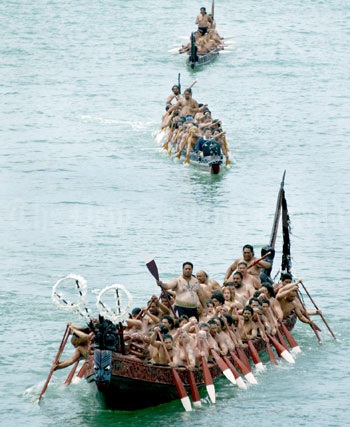Story summary
In the past, Māori used waka (canoes) just as we use cars today. New Zealand’s waterways were like roads, running along the coast and up rivers. Waka would be paddled along them, carrying people and goods. Some Māori still build traditional waka today.
Polynesian voyaging waka
The first settlers arrived in Aotearoa (New Zealand) in large waka from Polynesia. The journey lasted up to a month, and the waka were big enough to carry many people and enough food. These ancient craft were probably double-hulled – rather like two canoes side by side. Māori tribes trace their ancestors from these important waka.
Waka in New Zealand
Waka are built from tree trunks. In Polynesia, waka were narrow and not very stable, because they were carved from narrow trees. Some canoes had outriggers at the side to keep them steady. But New Zealand had vast forests of big trees such as tōtara and kauri. Māori built wider waka that were more stable in the water, with no outriggers.
Waka taua – the largest waka
These were up to 30 metres long, and some could hold 100 people. They were beautifully carved at front and back. Warriors used them to go to battle, and the vessels were considered to be sacred.
Waka tētē – fishing canoes
Waka tētē had simpler carving than waka taua. Tribal groups used them to carry goods and people along rivers and the coast. Later they were used for trading at ports such as Auckland.
Mōkihi – rafts
In the North Island the Ngāti Porou people made fishing rafts from layers of wood, tied together with vines. South Island tribes made them by lashing together bundles of dry bulrushes or flax flower stalks.
Waka tīwai – river canoes
These were very common, and were also used for fun and for racing. They were light and swift enough to jump over logs in the water.
Parts of the waka
Most vessels had the same basic parts:
- hiwi (hull): the body of the canoe
- tauihu (prow): the front
- taurapa (stern): the back
- rauawa (gunwales): the upper edges along each side.
Waka were usually moved with wooden paddles or poles. Some had sails made of raupō (a reed) or flax. The anchors were stones tied with rope.





